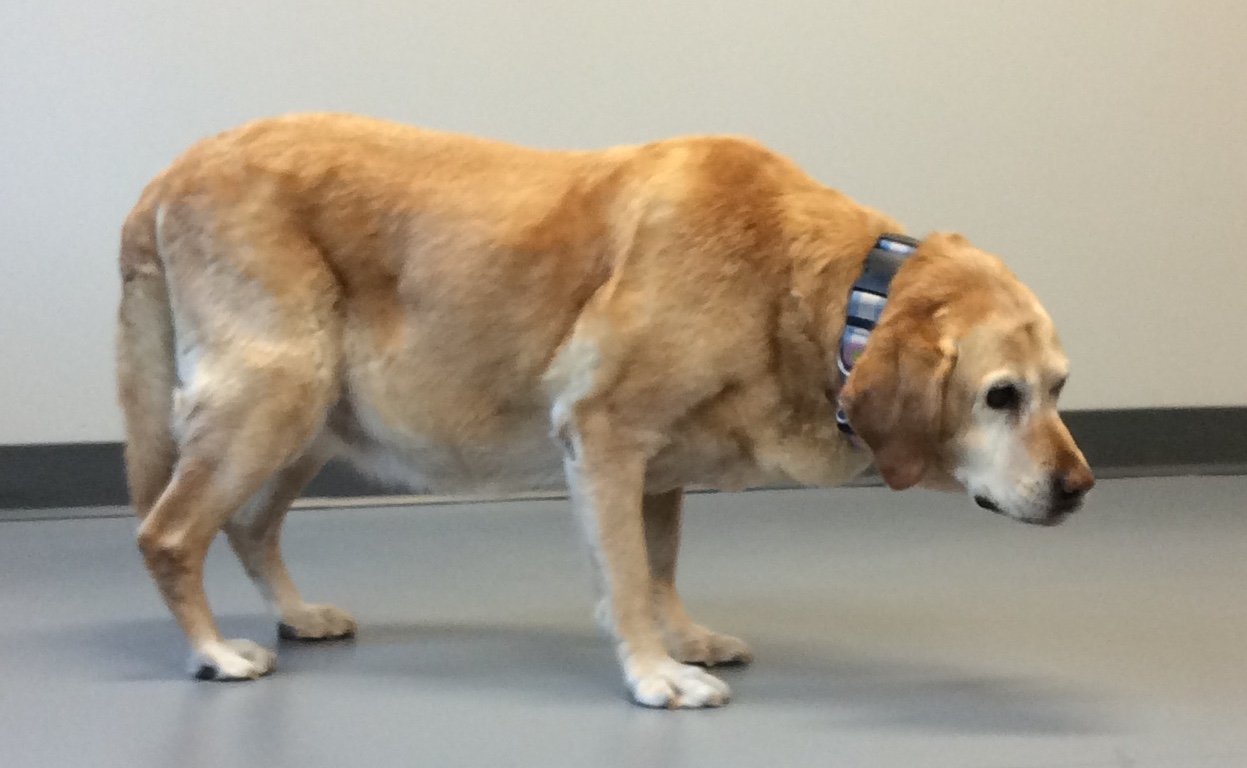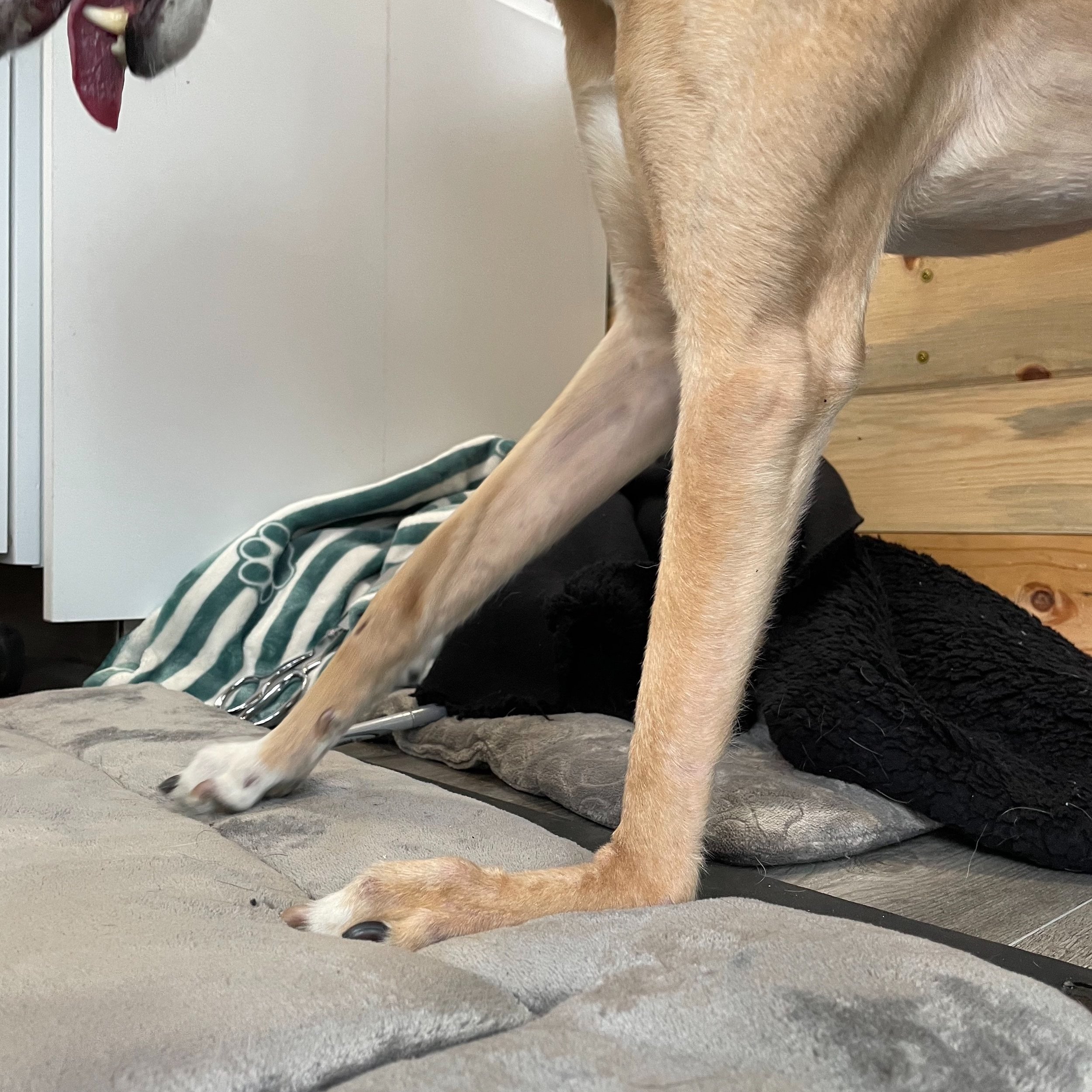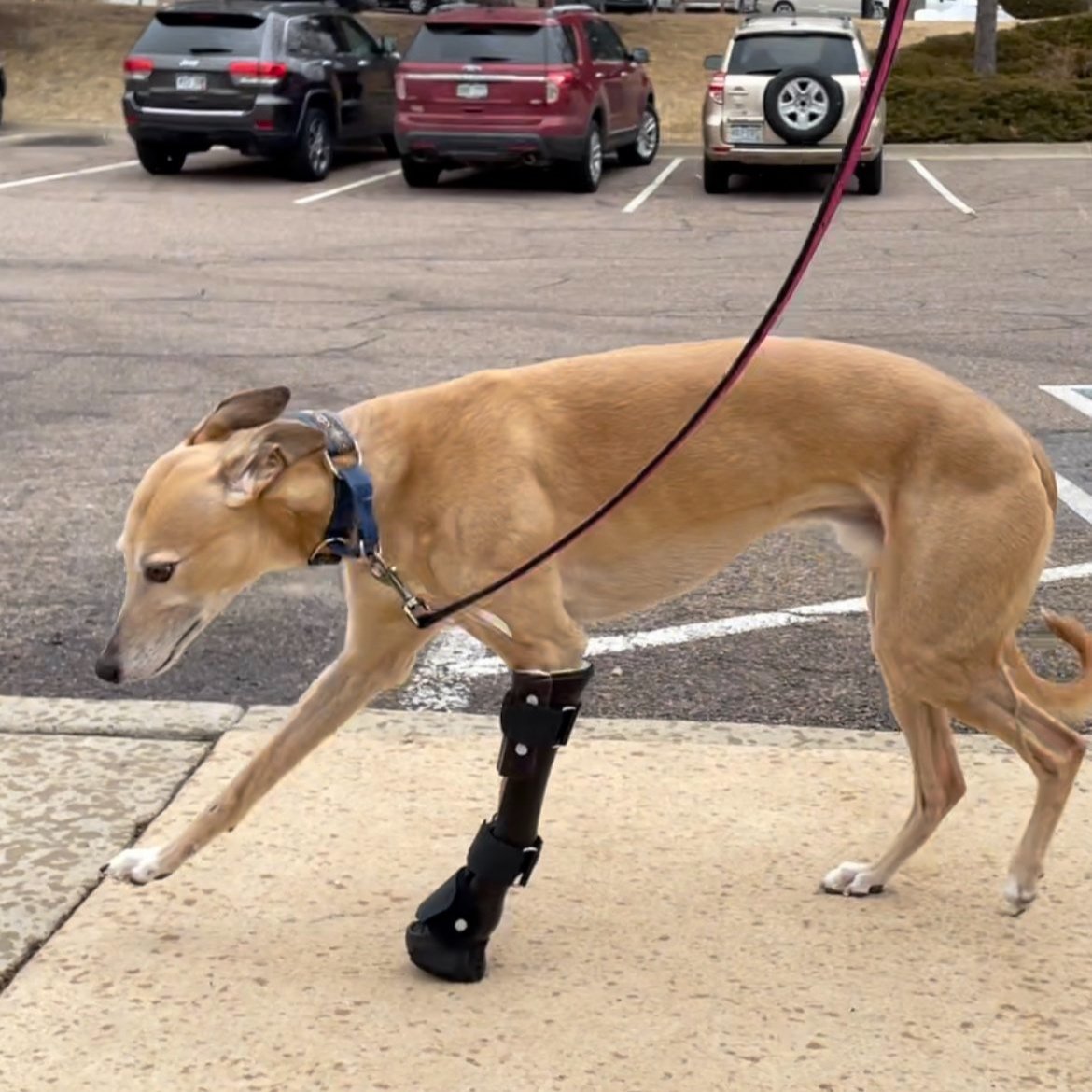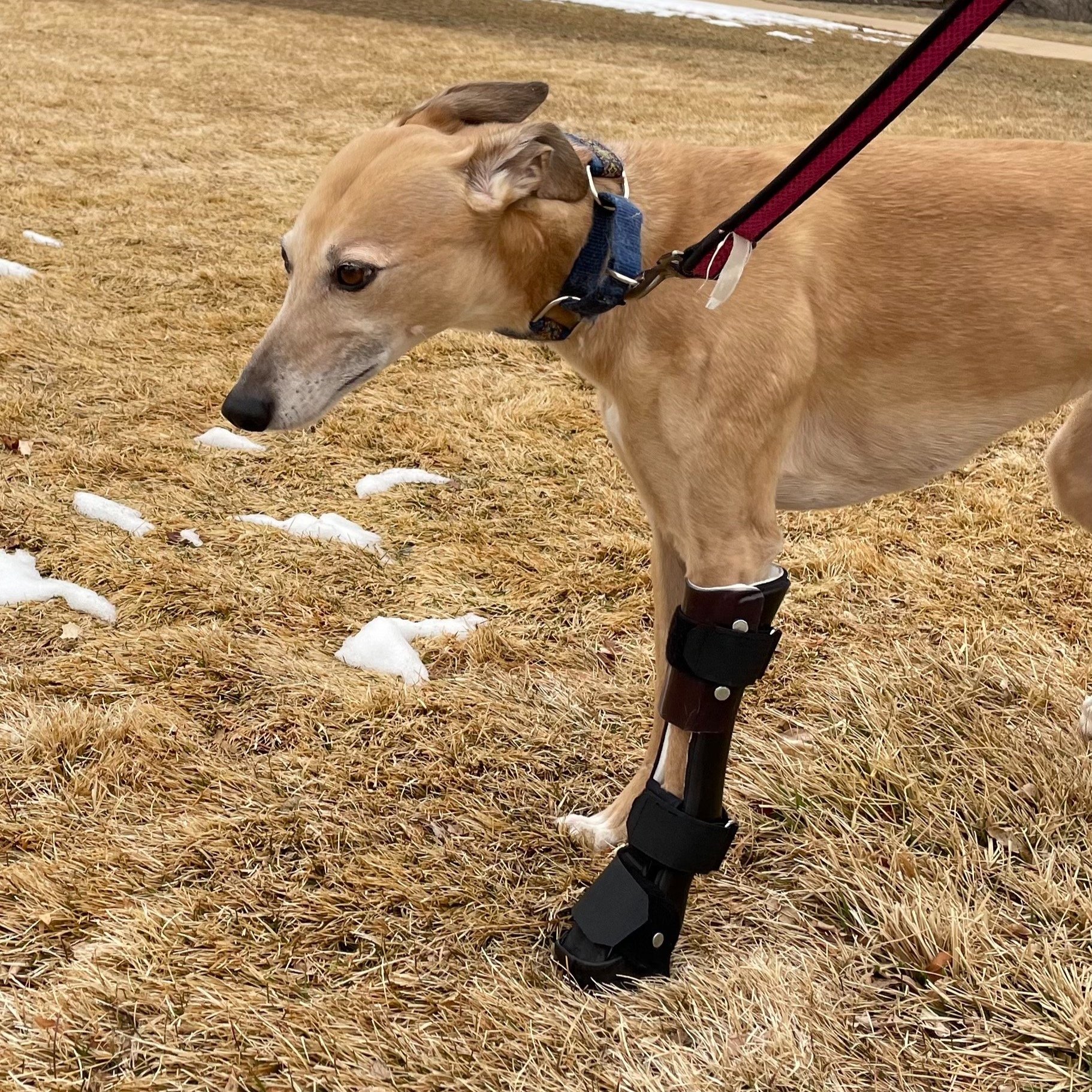Chronic Pain Management
Chronic Pain from osteoarthritis, spinal pathology such as disc disease, and the secondary pain of muscle tension are significant issues affecting the quality of life of our companions.
Osteoarthritis is the most common cause of chronic pain in dogs affecting at least 1 in 5 dogs. Dogs as young as 6 months of age can develop osteoarthritis of the elbows and hips. Spinal pain from spinal arthritis and disc disease are also very common. The reported prevalence of intervertebral disc disease in dogs is about 2% with some breeds more commonly affected than others. Some patients require referral for MRI and surgery and some, like humans with chronic back and neck pain, improve with medical management.
Many clients ask Dr. Mich how pain is recognized in animals. Unlike humans who may complain about discomfort, most dogs do not vocalize (whine, yelp, or cry) unless pain is sharp, abrupt and/or severe. An example might be stepping on a tail. In truth, most dogs in pain only show behavioral changes. See the text box.
When managing pain in our companion animals the key is to start with identifying the location and type of pain with a comprehensive examination. Often patients are referred for “arthritis.” This is wonderful and in order to get the best results it’s important to get very specific: know which joint, how severe, how long has it been present, is there instability of the joint, and whether there is spinal pain as well.
The second step is to identify secondary issues such as
Myofascial pain. This is pain caused by compensation leading to shortened muscles, stretched muscles, adherent fascia and skin causing a loss of flexibility. See the physical rehabilitation page for more information.
Nutritional concerns such as obesity or protein deficiency. See the nutrition page for more information.
Other health issues such as dental disease and hormone disorders, which can affect quality of life. These problems are referred back to the primary care veterinarian.
With information obtained from a comprehensive orthopedic, neurologic and myofascial exam, Dr. Mich develops a comprehensive treatment plan that may include combinations of supplements, medications, joint injections , nutrition, lifestyle adjustments (e.g. assistive devices, home modification, activity modification), physical rehabilitation , modalities (e.g. LASER, acupuncture, shockwave, TENS, therapeutic ultrasound), and surgery.
According to the American Animal Hospital Association 2015 Pain Management Guidelines for Dogs and Cats “appropriate pain management requires a continuum of care based on a well- thought-out plan that includes anticipation, early intervention, and evaluation of response to therapy.”
Dr. Mich uses the PLATTER approach from these guidelines in caring for her chronic pain patients.
Wonderful resources are found at:
Canine Arthritis Resources and Education website. CanineArthritis.org
International Veterinary Academy of Pain Management IVAPM.org







